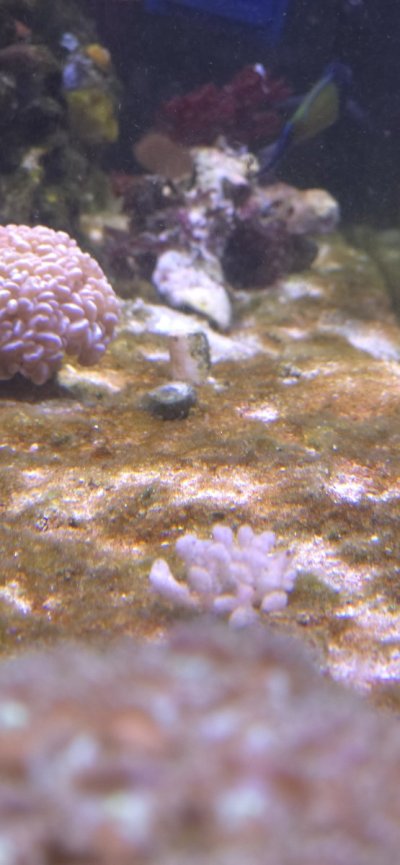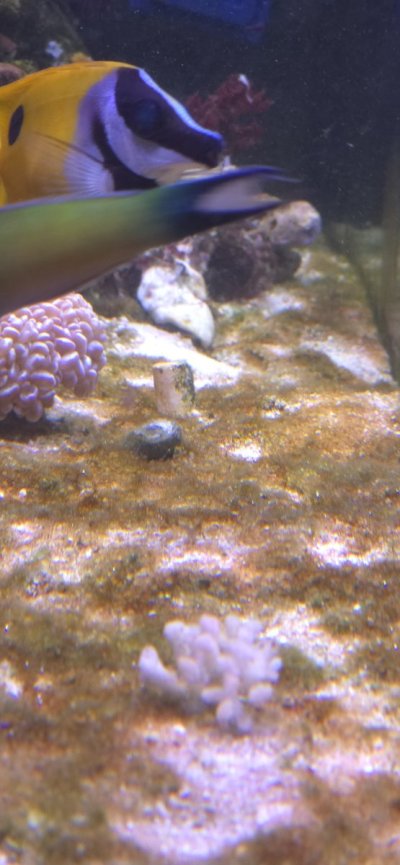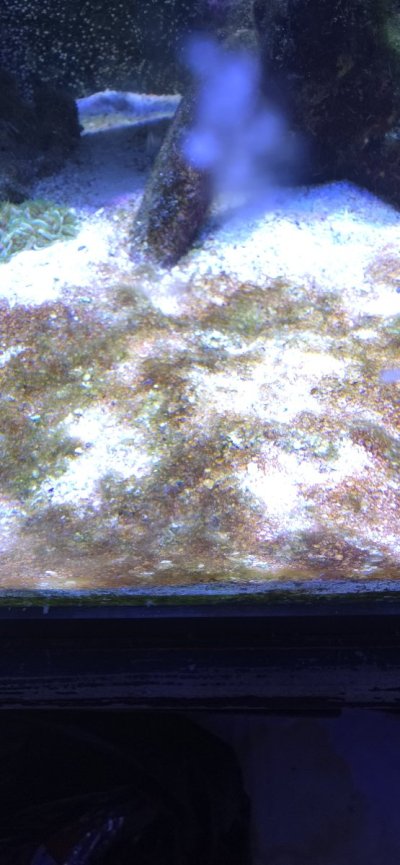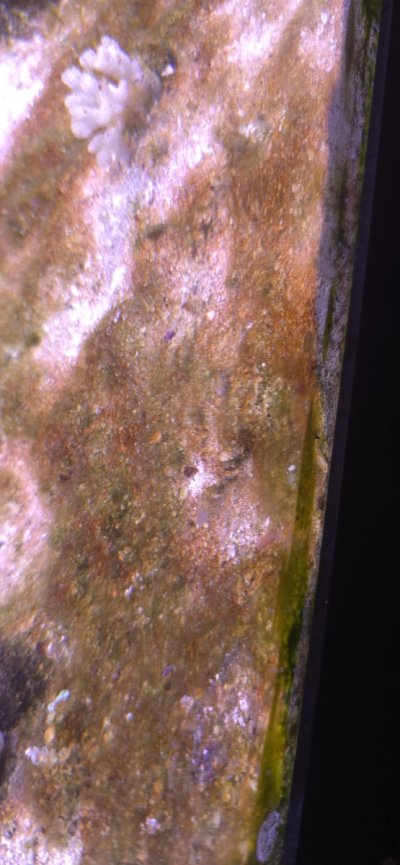Navigation
Install the app
How to install the app on iOS
Follow along with the video below to see how to install our site as a web app on your home screen.
Note: This feature may not be available in some browsers.
More options
You are using an out of date browser. It may not display this or other websites correctly.
You should upgrade or use an alternative browser.
You should upgrade or use an alternative browser.
Dinos?
- Thread starter Ryan Kindle
- Start date
- Tagged users None
- Joined
- Sep 21, 2018
- Messages
- 6,708
- Reaction score
- 7,189
Hard to say from the pictures. To start the analysis though, take a pinch of the surface growth, including the sand and place it in a small, clear container of tank water. Gently swirl it in the water.
Filamentous growth like algae will resist breaking up. Filamentous cyanobacteria films if thick enough will also resist breaking up. In either case, you will get a better view of the clump and may see tiny filaments. Diatoms and dinoflagellates are single cells that stick together with mucus. No permanent filaments. This type of film breaks up quite easily. Posting a photo of the swirl mess could be useful.
This a not rigorous test for identifying organisms but the results could be a good conversation starter.
- Joined
- Dec 12, 2018
- Messages
- 190
- Reaction score
- 160
THis help at all?Hard to say from the pictures. To start the analysis though, take a pinch of the surface growth, including the sand and place it in a small, clear container of tank water. Gently swirl it in the water.
Filamentous growth like algae will resist breaking up. Filamentous cyanobacteria films if thick enough will also resist breaking up. In either case, you will get a better view of the clump and may see tiny filaments. Diatoms and dinoflagellates are single cells that stick together with mucus. No permanent filaments. This type of film breaks up quite easily. Posting a photo of the swirl mess could be useful.
This a not rigorous test for identifying organisms but the results could be a good conversation starter.
Attachments
- Joined
- Sep 21, 2018
- Messages
- 6,708
- Reaction score
- 7,189
Can’t this on iPad. SorryTHis help at all?
- Joined
- May 22, 2016
- Messages
- 6,573
- Reaction score
- 10,154
The tank pics and the video make me think there is some green filamentous algae (GHA) in there holding stuff together. Then other things growing on it as well.
The video of the swirling water makes the color look very much like GHA / green cyano and not much brown dinos.
The video of the swirling water makes the color look very much like GHA / green cyano and not much brown dinos.
Similar threads
- Replies
- 43
- Views
- 1,924
- Replies
- 5
- Views
- 120
- Replies
- 7
- Views
- 176


















